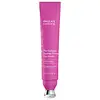What's inside
What's inside
 Key Ingredients
Key Ingredients

 Benefits
Benefits

 Concerns
Concerns

No concerns
 Ingredients Side-by-side
Ingredients Side-by-side

Water
Skin ConditioningDimethicone
EmollientPentylene Glycol
Skin ConditioningSilica
AbrasiveSqualane
EmollientUndecane
EmollientGlycerin
HumectantPyrus Malus Fruit Extract
Skin ConditioningTridecane
Perfuming1,2-Hexanediol
Skin ConditioningAmmonium Acryloyldimethyltaurate/Vp Copolymer
Cetyl Alcohol
EmollientPolyglyceryl-10 Laurate
Skin ConditioningPolyglyceryl-4 Caprate
EmulsifyingHydroxyacetophenone
AntioxidantPropanediol
SolventTridecapeptide-1
Skin ConditioningPalmitoyl Tetrapeptide-7
Skin ConditioningAcetyl Hexapeptide-8
HumectantArginine/Lysine Polypeptide
Skin ConditioningAcrylates/C10-30 Alkyl Acrylate Crosspolymer
Emulsion StabilisingSodium Phytate
Sorbitan Oleate
EmulsifyingDiosmine
AntioxidantColeus Forskohlii Root Extract
EmollientCaprylyl Glycol
EmollientXanthan Gum
EmulsifyingGlyceryl Caprylate
EmollientPseudoalteromonas Ferment Extract
HumectantTocopherol
AntioxidantWater, Dimethicone, Pentylene Glycol, Silica, Squalane, Undecane, Glycerin, Pyrus Malus Fruit Extract, Tridecane, 1,2-Hexanediol, Ammonium Acryloyldimethyltaurate/Vp Copolymer, Cetyl Alcohol, Polyglyceryl-10 Laurate, Polyglyceryl-4 Caprate, Hydroxyacetophenone, Propanediol, Tridecapeptide-1, Palmitoyl Tetrapeptide-7, Acetyl Hexapeptide-8, Arginine/Lysine Polypeptide, Acrylates/C10-30 Alkyl Acrylate Crosspolymer, Sodium Phytate, Sorbitan Oleate, Diosmine, Coleus Forskohlii Root Extract, Caprylyl Glycol, Xanthan Gum, Glyceryl Caprylate, Pseudoalteromonas Ferment Extract, Tocopherol
 Reviews
Reviews

Ingredients Explained
These ingredients are found in both products.
Ingredients higher up in an ingredient list are typically present in a larger amount.
Caprylyl Glycol is a humectant and emollient, meaning it attracts and preserves moisture.
It is a common ingredient in many products, especially those designed to hydrate skin. The primary benefits are retaining moisture, skin softening, and promoting a healthy skin barrier.
Though Caprylyl Glycol is an alcohol derived from fatty acids, it is not the kind that can dry out skin.
This ingredient is also used as a preservative to extend the life of products. It has slight antimicrobial properties.
Learn more about Caprylyl GlycolGlycerin is already naturally found in your skin. It helps moisturize and protect your skin.
A study from 2016 found glycerin to be more effective as a humectant than AHAs and hyaluronic acid.
As a humectant, it helps the skin stay hydrated by pulling moisture to your skin. The low molecular weight of glycerin allows it to pull moisture into the deeper layers of your skin.
Hydrated skin improves your skin barrier; Your skin barrier helps protect against irritants and bacteria.
Glycerin has also been found to have antimicrobial and antiviral properties. Due to these properties, glycerin is often used in wound and burn treatments.
In cosmetics, glycerin is usually derived from plants such as soybean or palm. However, it can also be sourced from animals, such as tallow or animal fat.
This ingredient is organic, colorless, odorless, and non-toxic.
Glycerin is the name for this ingredient in American English. British English uses Glycerol/Glycerine.
Learn more about GlycerinHydroxyacetophenone is antioxidant with skin conditioning and soothing properties. It also boosts the efficiency of preservatives.
This ingredient is not irritating or sensitizing.
Water. It's the most common cosmetic ingredient of all. You'll usually see it at the top of ingredient lists, meaning that it makes up the largest part of the product.
So why is it so popular? Water most often acts as a solvent - this means that it helps dissolve other ingredients into the formulation.
You'll also recognize water as that liquid we all need to stay alive. If you see this, drink a glass of water. Stay hydrated!
Learn more about Water